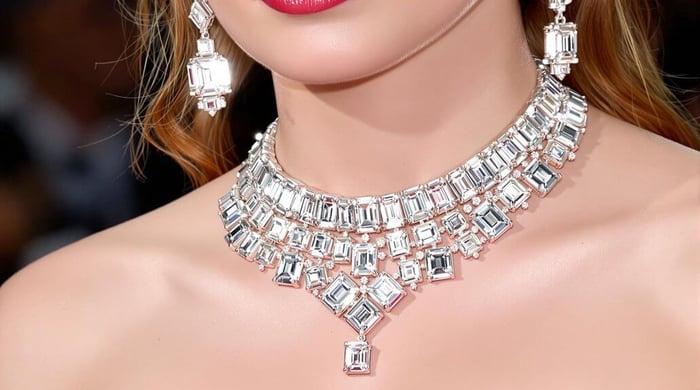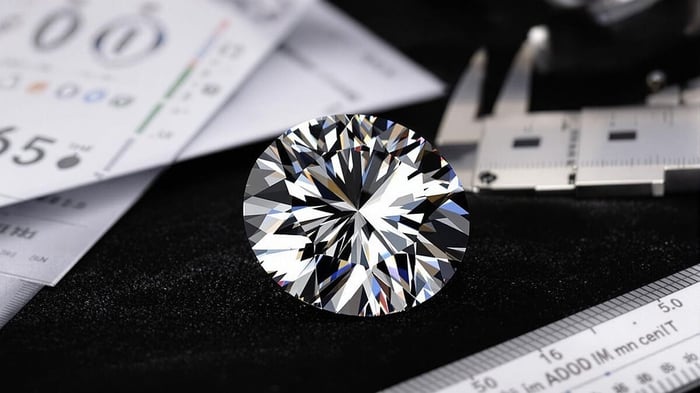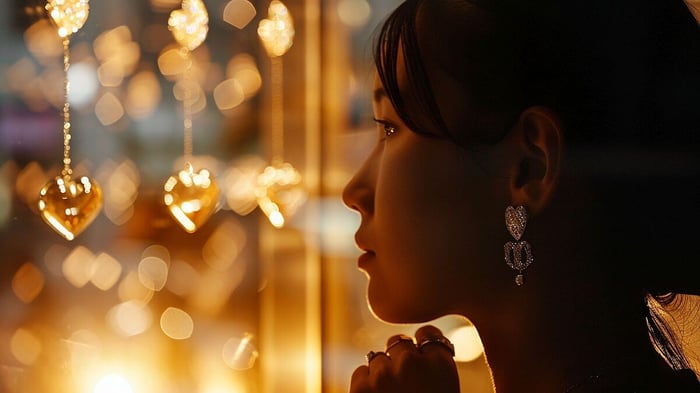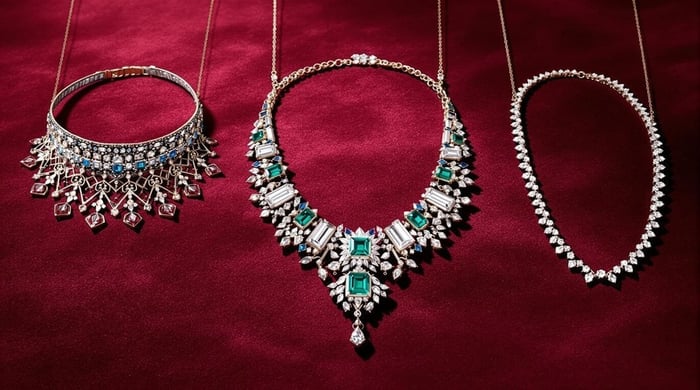Table of Contents
- Takeaways About the Value of Diamonds
- The Fundamental Science Behind Diamond Formation and Value
- Breaking Down the 4Cs: Quality Metrics That Drive Market Prices
- Natural vs. Lab-Grown: Understanding Market Value Differences
- The Designer Effect: How Branding Influences Diamond Value
- How Diamond Certification Affects a Diamond's Value
- Market Forces and Rarity: The Economics of Diamond Pricing
- Embrace Timeless Beauty with Handcrafted Perfection
The value of diamonds stems from a complex interplay of natural formation conditions, physical characteristics, and market dynamics. Although all diamonds consist of crystallised carbon, their worth varies significantly based on the "Four Cs" (cut, colour, clarity, and carat weight), with certified natural diamonds commanding higher prices than lab-grown substitutes.
Market forces, branding, and historical significance further influence pricing, while ethical sourcing and supply chain transparency increasingly affect valuations. The true architecture of a diamond's worth extends far beyond its sparkling surface.
Takeaways About the Value of Diamonds
- Exceptional diamonds commanding millions possess rare combinations of the 4Cs, particularly flawless clarity and superior cut grades.
- Historical provenance and documentation of famous ownership dramatically increase a diamond's value beyond its physical characteristics.
- Type IIa diamonds, formed at extreme depths, command premium prices due to their exceptional purity and rarity.
- Lab-grown diamonds, despite identical properties to natural ones, have significantly lower value due to unlimited production capacity.
- Diamonds lacking certification, having poor cuts, or showing visible inclusions lose most market value regardless of size.
The Fundamental Science Behind Diamond Formation and Value
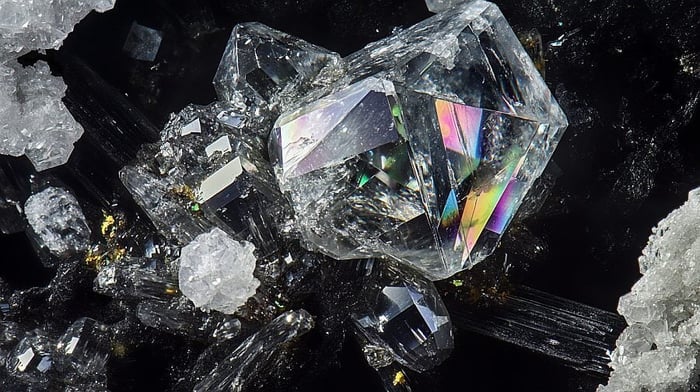
Even though many consider diamonds merely beautiful jewels, their formation represents one of Earth's most fascinating geological processes, occurring deep within the planet's mantle at depths of 150-200 kilometres.
Comprehending their diamond chemistry reveals an intricate movement of carbon atoms crystallising under extreme conditions, where temperatures soar to 900-1300°C and pressures reach a staggering 45-60 kilobars.
Throughout geological history, these precious stones have emerged through two primary pathways: the violent ascent via kimberlite and lamproite eruptions and the patient process of subduction zone formation.
Within the Earth's mantle, carbon-rich materials undergo remarkable transformation as they're subjected to immense pressure from overlying rock formations, as the planet's internal heat provides the necessary thermal energy for crystallisation, resulting in nature's most sought-after gemstone. The rarity and geological conditions required for larger diamonds make them especially valuable, with carat weight being the primary factor in their market worth.
The process of diamond formation has been ongoing for billions of years, with most diamonds dating back to over 3 billion years ago.
Conversely, lab-grown diamonds emerge through sophisticated technological processes, either High Pressure High Temperature (HPHT) or Chemical Vapour Deposition (CVD), completing their formation in mere weeks. This efficient production process makes them considerably less expensive than their natural counterparts.
While both varieties share identical physical properties, nature's touch leaves subtle signatures in natural diamonds, including trace amounts of nitrogen, which specialised equipment can detect during certification processes.
1.00ct G/SI 3 Row Diamond Pave Set Full Eternity Ring in 18k Rose Gold
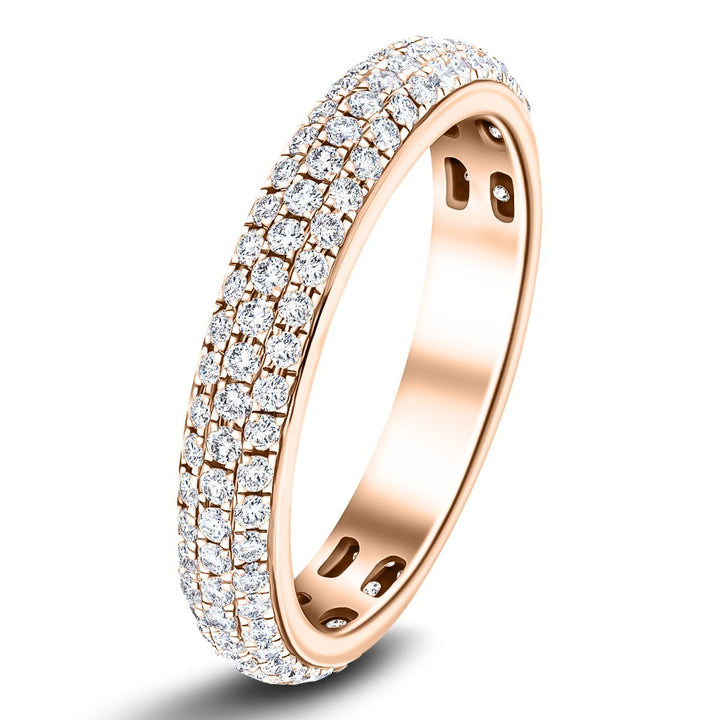
$2,247.00
$3,935.00
This is a beautiful full eternity diamond ring that elegantly showcases three rows of ethically sourced G/SI quality diamonds in a pave setting around a fine 18k rose gold band for an eye-catching effect when worn on the finger. We… read more
Breaking Down the 4Cs: Quality Metrics That Drive Market Prices
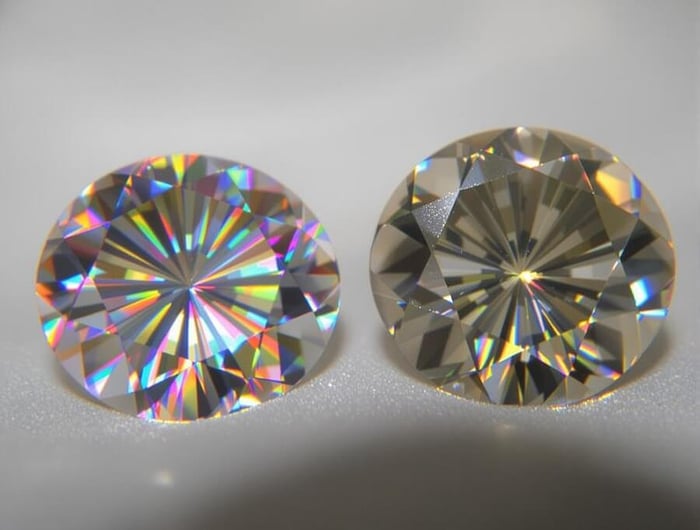
Even though diamonds have long captivated humanity with their brilliance, their true value lies in the careful evaluation of four fundamental characteristics known as the 4Cs: cut, colour, clarity, and carat weight.
The diamond's cut craftsmanship stands as the most essential factor, determining how light interacts with the stone and creates its signature sparkle, whereas colour grading assesses the gemstone's hue on a scale from perfectly colourless to light yellow. A well-executed cut can enhance the stone's appearance so much that it makes lower grades less noticeable. Before the establishment of these standards, diamonds were assessed using ambiguous descriptions like "water" and "made well." Round diamonds remain the most sought-after shape due to their superior light performance and timeless appeal.
Through precise clarity evaluation, experts identify internal and external characteristics that affect a diamond's purity, rating stones from flawless to included.
In the meantime, carat weight, measured in points to a hundredth of a carat, provides a standardised measure of mass that, combined with the other Cs, establishes a diamond's market value.
Natural vs. Lab-Grown: Understanding Market Value Differences
In the ongoing debate between natural and lab-grown diamonds, their differing formation processes create stark differences in market dynamics, with natural diamonds requiring billions of years of geological pressure whereas their synthetic counterparts emerge from laboratories in mere weeks. High-quality diamonds are created through CVD and HPHT processes in controlled laboratory environments. Skilled artisans carefully transform these raw stones into brilliant gems through precise cutting techniques.
This fundamental distinction drives a significant disparity in market value, as evidenced by the striking price differential where lab-grown diamonds typically cost as little as 10% of their natural counterparts before cutting and polishing, with a one-carat specimen commanding £1,000 compared to £4,200 for its mined equivalent. Market data shows that technical advancements continue to drive lab-grown diamond prices even lower, mirroring historical trends seen with other synthetic gemstones.
The rarity factor of natural diamonds, combined with their proven ability to retain up to 50% of their value, or even appreciate over time, continues to position them as the more stable investment choice in the luxury market, as lab-grown substitutes face ongoing price depreciation because of increasing production capacity and market saturation.
Market Value Over Time
Though natural diamonds have historically maintained their market value over generations, the emergence of lab-grown replacements has significantly transformed the industry's pricing dynamics since 2017.
Economic fluctuations have particularly affected lab-grown diamonds, which initially cost 23% more than their natural counterparts but now sell for as little as 10% of natural diamond prices. This striking shift reflects evolving consumer preferences, with environmentally conscious buyers increasingly choosing lab-grown options in spite of their minimal resale value.
The global diamond market has seen steady expansion, reaching $2.52 billion in 2024.
Whereas a natural 1-carat diamond typically commands $2,500 and retains roughly half its value, its lab-created equivalent sells for approximately $500 with negligible resale potential.
Market projections suggest this trend will continue, with lab-grown diamond prices expected to stabilise by 2025 as production technology matures and market saturation occurs.
Pave Diamond Drop Heart Earrings 0.90ct G/SI Quality 18k Rose Gold
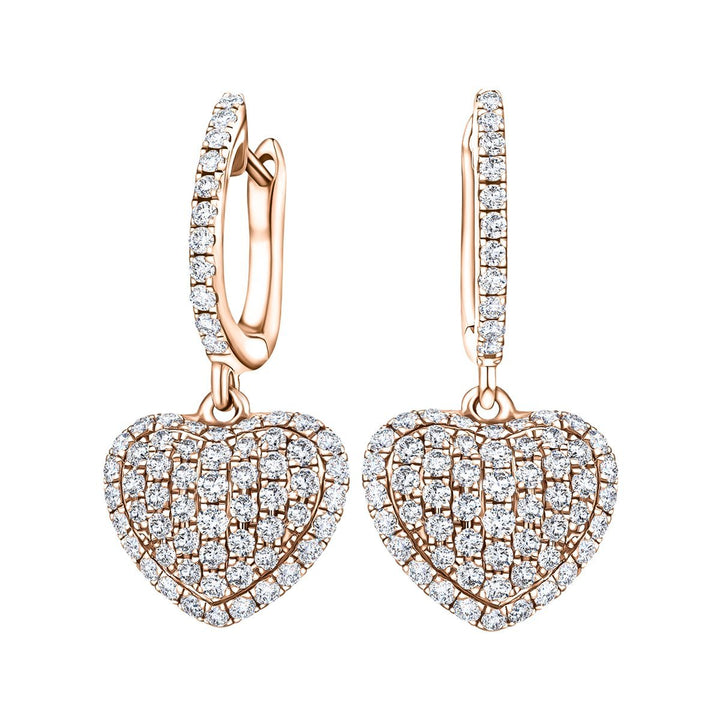
$1,878.00
$3,205.00
Handcrafted in romantic 18k rose gold, this beautiful pair of heart-shaped diamond drop earrings feature bright and sparkling round-cut ethically sourced G/SI quality diamonds. The 0.90ct of natural diamonds are mounted in a pave setting to form a heart shape… read more
Rarity and Pricing Impact
As natural diamonds derive their value from inherent scarcity and geological rarity, lab-grown diamonds face fundamentally different market dynamics that shape their pricing structure. At the same time, a one-carat natural diamond commands upwards of £4,400 because of its finite supply and complex pricing strategies; its lab-grown counterpart sells for merely £1,000, reflecting the unlimited production capacity of manufacturing facilities. The emphasis on cut quality significantly impacts the final price of both natural and lab-grown diamonds, though the premium for excellent cuts remains higher in natural stones. Most mined diamonds are actually low-quality specimens that lack the necessary characteristics for jewellery use.
| Factor | Natural Diamonds | Lab-Grown Diamonds |
| Supply | Limited & decreasing | Unlimited & increasing |
| Value Retention | Strong resale value | Significant depreciation |
| Price Trend | Steadily increasing | Swiftly declining |
The diamond rarity factor becomes particularly evident when examining larger stones, where natural diamonds follow an exponential pricing curve as lab-grown versions maintain relatively linear cost increases, creating a stark value proposition that continues to widen over time.
The Designer Effect: How Branding Influences Diamond Value
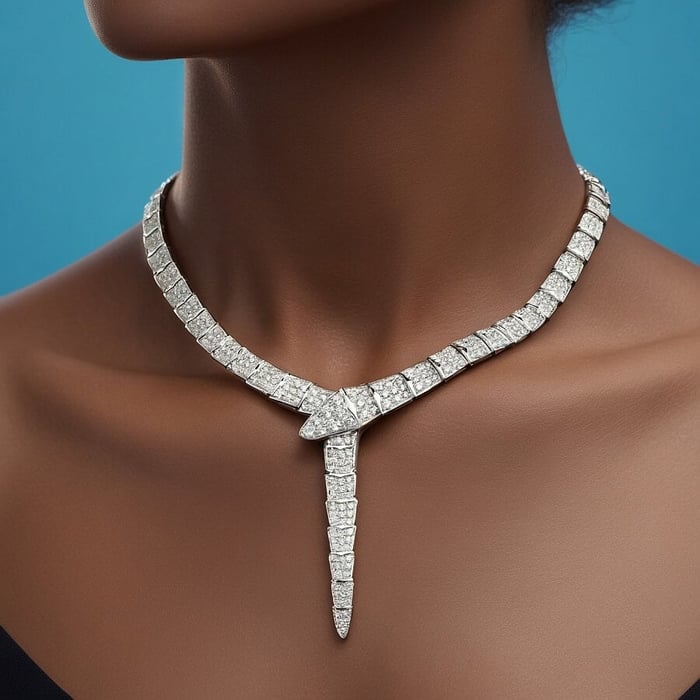 Branding: An Element of the Hidden Value of Diamonds
Branding: An Element of the Hidden Value of DiamondsEven though unset diamonds may captivate with their natural beauty, it's the prestigious names behind the finished jewellery that often determine their true market worth in today's luxury environment.
Leading houses like Tiffany & Co. and Cartier have masterfully cultivated brand prestige through sophisticated marketing strategies and societal trend awareness, creating an emotional connection that has transformed mere stones into coveted symbols of status and refinement.
In the swiftly growing luxury market, projected to reach £25.5 billion by 2030, consumer loyalty isn't just about the diamond's physical attributes—it's about the story, the experience, and the ethical considerations that premium brands represent.
Through calculated digital marketing initiatives and carefully curated retail experiences, these prestigious brands have enhanced their diamonds' resale potential, guaranteeing that their pieces remain both personal gems and strategic investments. The historical impact of De Beers' market monopoly control significantly shaped how luxury brands position their diamonds today.
The market's growth is particularly evident in emerging economies where growing consumer wealth is driving unprecedented demand for luxury diamond jewellery.
How Diamond Certification Affects a Diamond's Value
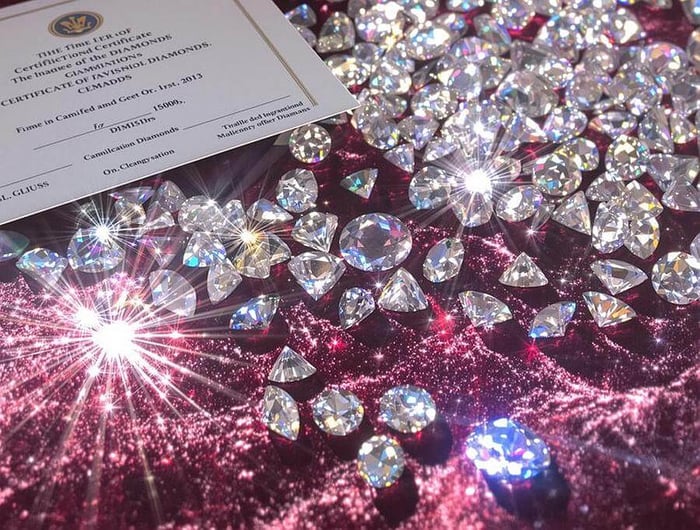
Beyond their role as documentation, GIA certificates have transformed diamond valuation by establishing universally accepted standards that serve as the bedrock of modern diamond trading.
Through careful analysis of a diamond's physical characteristics, including microscopic inclusions and precise measurements of proportions, these certifications create an objective framework that directly impacts market value. This rigorous process helps build market confidence and ensures transparency across the entire diamond industry.
The certification process, particularly from prestigious laboratories like GIA, transforms abstract quality assessments into concrete, comparable data points that enable buyers and sellers to negotiate with confidence, in the end driving premium prices for stones with superior grades.
Pave Diamond Hoop Earrings 0.70ct G/SI Quality in 18k Rose Gold
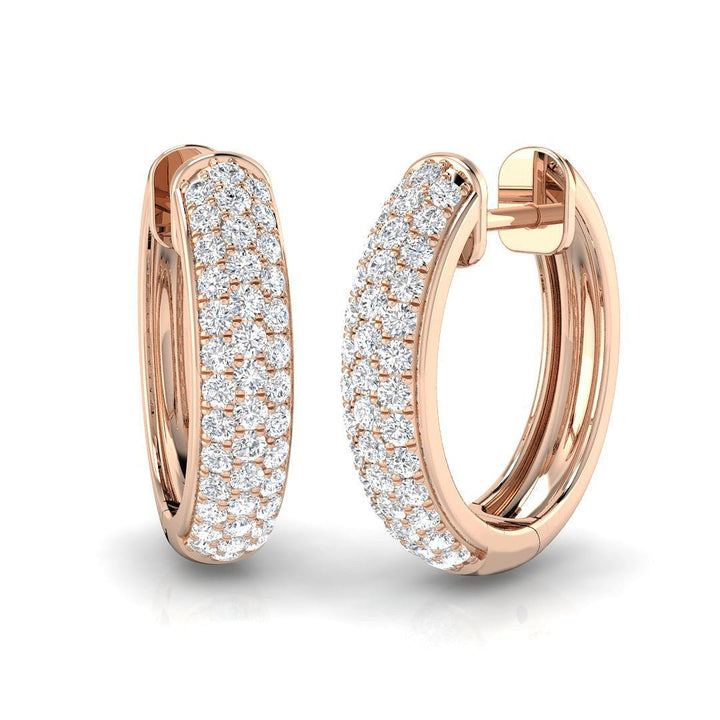
$1,660.00
$2,778.00
These charming and versatile diamond hoop earrings are proudly handmade in the UK and feature 0.70ct of ethically sourced G/SI quality diamonds. You will love the way our designer and craftsmen shaped the gems into several round-cuts and expertly placed… read more
GIA's Effect On Value
When considering a diamond's market value, the Gemological Institute of America's (GIA) certification stands as the industry's most influential verification system, altering how diamonds are bought, sold, and valued in today's market.
Through rigorous adherence to GIA standards, certified diamonds command significantly higher prices and enjoy broader market acceptance, reflecting the certification's vital role in establishing consumer trust. As a non-profit organisation dedicated to gemmological research and education since 1931, GIA maintains strict independence in its evaluations.
- Provides thorough analysis of the 4Cs (cut, colour, clarity, carat)
- Verifies authenticity and origin (natural or man-made)
- Documents specific characteristics and flaws
- Assigns standardised grades recognised worldwide
- Includes detailed measurements and proportions
The impact of GIA certification extends beyond mere documentation, fundamentally shaping market perception and creating a universal language for diamond description and valuation. Market data consistently shows that diamonds with GIA certification achieve higher resale values compared to uncertified stones.
This standardisation has transformed the industry, enabling confident transactions between buyers and sellers while maintaining the integrity of diamond investments.
Beyond Lab Reports' Benefits
Even though GIA certification establishes a diamond's fundamental qualities, the true value of professional gemological reports extends far beyond their technical measurements and grades.
Based on current market conditions, diamonds typically achieve 25-30% resale value of their original purchase price.
In spite of common certification myths, these reports serve as influential tools for both protecting investments and implementing effective resale strategies in today's complex diamond market.
Beyond establishing authenticity, certification provides essential market advantages through standardised documentation that helps dispel common misconceptions about a stone's worth.
When paired with detailed knowledge of market dynamics, certified diamonds consistently outperform their uncertified counterparts in maintaining long-term value.
The certification's role in pricing transparency, combined with its ability to facilitate insurance coverage and provide definitive proof of quality, creates a thorough framework that sophisticated buyers rely on for making informed investment decisions.
Major certification laboratories like GIA employ trained gemologists who conduct rigorous evaluations under controlled conditions to ensure accurate grading results.
Market Forces and Rarity: The Economics of Diamond Pricing
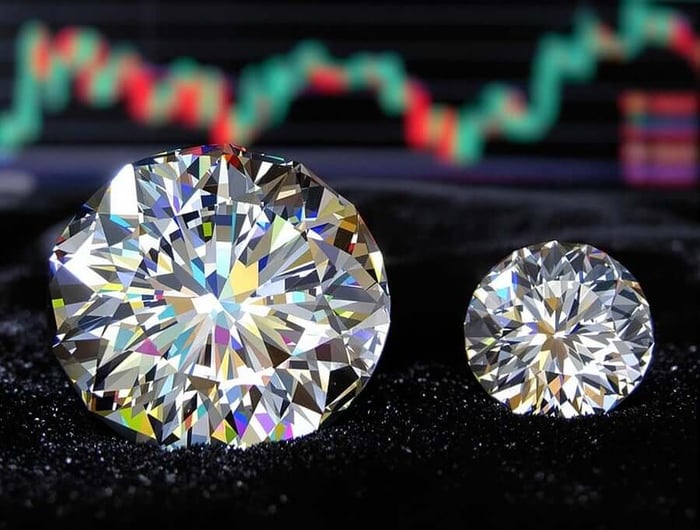
Since the inception of modern diamond trading, complex market forces have shaped the economics of these precious stones through an intricate movement of supply, demand, and inherent rarity.
Market supply dynamics respond sensitively to global economic conditions, whereas consumer confidence significantly influences purchasing patterns in the luxury segment. The industry's commitment to ethical sourcing protocols has become a crucial factor in determining market accessibility and value. The discovery of rare pink diamonds at the now-closed Argyle Mine has dramatically impacted the value of these coloured stones. Comprehending these forces reveals why certain diamonds command astronomical prices whereas others hold modest value.
- Geographic scarcity limits production to select regions worldwide
- Natural formation processes require billions of years
- Supply chain complexity affects final market pricing
- Historical significance and provenance create premium value
- Certification from respected laboratories validates worth
The interplay of these factors, combined with the traditional Four Cs (cut, colour, clarity, and carat), creates a sophisticated pricing matrix that determines a diamond's ultimate market position and investment potential.
Fancy Set Diamond Tennis Bracelet 3.00ct G/SI in 18k White Gold
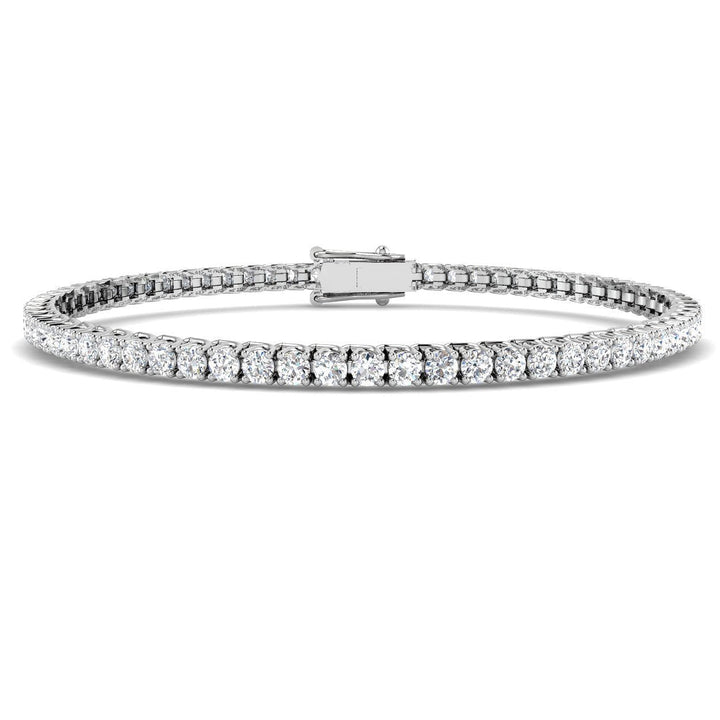
$4,713.00
$8,741.00
This exquisite piece is a true work of art. When you want to make a statement, this style of diamond bracelet is sure to do it. A standout, classic piece that is sure to be a favorite of both men… read more
Embrace Timeless Beauty with Handcrafted Perfection
In exploring the hidden architecture of diamonds, we've uncovered the intricate factors that contribute to their exceptional value. Along with price, there is an emotional element to the value of diamonds that we should not forget!
For those seeking to own a piece of this brilliance, All Diamond offers an exquisite collection of fine diamond jewellery. Each piece is designed and handcrafted in the UK, ensuring unparalleled craftsmanship.
Committed to ethical sourcing, All Diamond uses only natural diamonds, providing customers with confidence in their purchase. With a lifetime workmanship guarantee and a 30-day return and exchange policy, your satisfaction is paramount.
Discover the perfect piece to cherish by browsing our online diamond jewellery collections!
